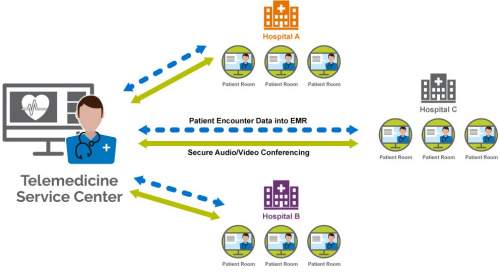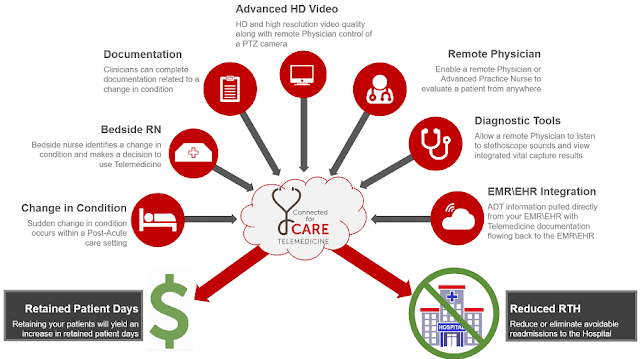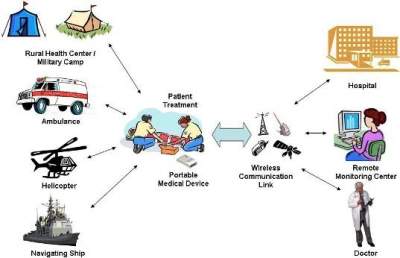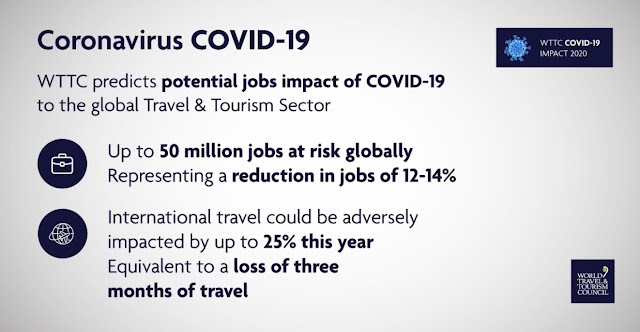The Lancet: Increasing chronic diseases stimulate the
development of COVID-19
The Lancet published a special issue Global Burden of Disease Study.
In GBD2019, important data related to China from where COVID arose are as follows:
Since 1990, the life expectancy of the Chinese population has
increased by nearly 10 years, from 68.1 years to 77.6 years in 2019. The
healthy life expectancy of the Chinese population has also increased
significantly.
The healthy life expectancy of the new born population in 2019
is 8 years longer than that of the population born 30 years ago.
Since 1990, the health loss of the Chinese population caused
by non-communicable diseases has increased by more than 40%.
In 2019, premature
deaths and poor health caused by non-communicable diseases reached 85%.
In the past 30 years, the biggest diseases that contributed
to the increase in health loss in China were ischemic heart disease, stroke,
lung cancer, diabetes, age-related diseases and other hearing loss.
In East
Asia, the main risk factor for health loss in 2019 is tobacco use.
Hypertension, unhealthy diets, and air pollution each account for 10-15% of
China's disease burden in 2019.
In 2019, China’s five major mortality risk factors were
smoking (approximately 2.7 million deaths), high blood pressure (2.6 million
deaths), unhealthy diet (2.02 million deaths), air pollution (1.85 million
deaths), and high blood sugar (107 Ten thousand people died).
The most comprehensive global research on COVID-19
The analysis of 286
causes of death, 369 diseases and injuries, and 87 risk factors in 204
countries and regions reveals how prepared the world's population is in
response to the COVID-19 epidemic affecting basic health.
The global crisis of chronic diseases and the failure of
global public health to contain the increase in highly preventable risk factors
have made the global population vulnerable to public health emergencies like
the COVID-19 epidemic.
We need to take urgent action to deal with chronic diseases,
social inequality, and the global syndemic that coexists with COVID-19 to
ensure a healthier health system and healthier people, so that countries are
more capable of responding to the threat of future epidemics.
The Global Burden of Disease Study provides a roadmap for
areas with the highest demand, including data on risk factors and chronic
disease burden in specific countries.
The interaction between COVID-19 and the continued global
growth of chronic diseases and related risk factors (including obesity,
hyperglycemia, and outdoor air pollution) has created a perfect storm over the
past 30 years, stimulating the development of COVID-19.
The Lancet published the 2019 Global Burden of Disease
Study (GBD). The latest research findings provide new insights into how
countries are prepared to respond to the impact of the COVID-19 epidemic on
basic health and clarify the true scale of the challenge of preventing further
threats from the pandemic.
This study also shows that the increase in the number of
people exposed to key risk factors (including high blood pressure, high blood
sugar, body mass index [BMI] and high cholesterol), coupled with certain
countries (such as the United States and Caribbean countries) due to
cardiovascular disease
The death toll is also increasing, indicating that the
life expectancy growth of the global population may be approaching a turning
point.
The author emphasizes that the vision of preventing disease
through government actions or through incentives that enable people to develop
healthier behaviors and obtain health care resources has not yet been realized
around the world.
"Most risk factors can be prevented and treated, and
dealing with them will bring huge social and economic benefits. We have not
been able to change unhealthy behaviors, especially those related to dietary
quality, caloric intake, and physical exercise. Related behaviors.
Part of the
reason is due to policy concerns, public health funding, and insufficient
behavioral research.” Professor Christopher Murray, Director of the Institute
for Health Metrics and Evaluation (IHME) of the University of Washington, who
led this research Say.
Several risk factors highlighted in this study and non-communicable
diseases (NCDs), including obesity, diabetes, and cardiovascular disease, are
all related to the increased risk of serious illness and death caused by
COVID-19.
However, various diseases not only affect each other physiologically;
they also interact with social factors. We need to carry out urgent actions to
deal with chronic diseases, social inequality, and the global syndemic of
COVID-19.
Comprehensive concurrency refers to the mutual influence of multiple
epidemics, which will increase the disease burden of people already affected by
the disease and make them more vulnerable.
The Lancet Editor-in-Chief Dr Richard Horton said on COVID-19:
"The
concurrent nature of the threats we face requires us to not only deal with the
symptoms, but also urgently deal with the underlying social inequalities
(poverty, housing, education, and ethnic issues) that create this situation. ),
these issues are powerful determinants of health."
He continued: "COVID-19 is an urgent and long-term
public health emergency. The long-term neglect of the current crisis puts the
future at risk. So far, COVID-19 has caused more than one million deaths and is
non-communicable.
Disease plays an important role in this process, and it will
continue to affect the health of various countries after the epidemic subsides.
This global burden of disease study provides a method for how to rebuild the
health system after the COVID-19 epidemic. Focus on the regions with the
highest demand and the differences between different countries.
The health system is ill-prepared for the rapid growth of
non-communicable diseases and disability issues
Although the global healthy life expectancy (the number of
years that people can expect to be in good health) has increased steadily
between 1990 and 2019 (over 6.5 years), the healthy life expectancy in 198 of
the 204 countries we assessed It has not yet reached the same number of years
as the overall life expectancy, which shows that people have longer years of
unhealthy health.
Disability, rather than premature death, has become an
increasingly large part of the global burden of disease, from approximately
one-fifth (21%) of the total burden in 1990 to more than one-third of the total
burden in 2019 (34 %).
What is disability-adjusted life years or DALYs?
In 11 countries (including Singapore, Iceland, Norway,
Ireland, Australia, New Zealand, and Qatar), more than half of the health loss
(measured by disability-adjusted life years DALYs) is caused by
non-communicable diseases and injuries. Caused by the resulting disability.
In the past few decades, global efforts have been made to
deal with infectious diseases and antenatal care, and have successfully
improved the health of children under 10 years of age (the overall disease
burden has been reduced by about 55%). However, health work for the elderly is still
not enough. In contrast to this.
In the past three decades, the top ten causes of global
health loss (measured by the absolute value added of DALYs), including six
major causes affecting the elderly population: Ischemic heart disease (between
1990 and 2019 Related DALYs increased by 50%), diabetes (148% increase), stroke
(32%), chronic kidney disease (93%), lung cancer (69%), and age-related hearing
loss (83%).
In addition, the other four causes are common from adolescence to
old age: human immunodeficiency virus/AIDS (HIV/AIDS) (128%), musculoskeletal
disease (129%), low back pain (47%), and depression (61%). For example, between
1990 and 2019, DALYs caused by ischemic heart disease in the Philippines
increased by more than 400%, while DALYs caused by diabetes in the UAE
increased by more than 1,000%.
The growth of such ill-health conditions poses a
threat to some health care systems, which are generally overwhelmed and unable
to cope with chronic diseases related to population growth and aging.
The main factors of health loss in 2019 vary greatly
depending on the age group. Road traffic injuries, headaches, HIV/AIDS, low
back pain, and depression are the main health problems for younger people aged
10 to 49. In contrast, ischemic heart disease, stroke, and diabetes are the
main causes of health loss for people aged 50 and over.
In the past ten years, global progress in health has been
uneven. Low- and middle-income countries (LMICs) have made impressive progress
in health, mainly due to successful treatments for infectious diseases,
maternal and neonatal diseases. For example, in Ethiopia, Sudan, and
Bangladesh, age-standardized health loss rates (DALYs) have decreased by 2% or
more per year.
However, the author warns that the health systems of low- and
middle-income countries are not adequate to cope with the increasing disease
burden caused by non-communicable diseases.
The proportion of the disease
burden caused by these non-communicable diseases in the total disease burden in
low- and middle-income countries varies from About one-third in 1990 increased
to nearly two-thirds in 2019.
In addition, although the number of deaths due to
infectious diseases in low- and middle-income countries has generally
decreased, the number of deaths due to non-communicable diseases is increasing.
For example, in Uzbekistan, diabetes has risen from the 21st cause of death to
the fifth leading cause of death (a 600% increase in deaths).
Similarly, in the
Philippines, ischemic heart disease has risen from the fifth cause of death to
the leading cause of death (increased by more than 350%).
In contrast, in some high-income countries, health
improvements have begun to stagnate, and have even reversed in several
countries, especially in the United States, where the age-standardized death
rate has increased by nearly 3 in the past decade. %.
The author believes that
the reasons for the lack of progress may include the increase in obesity, and
the decreasing possibility of reducing smoking and the possibility of further
improving the coverage of hypertension and high cholesterol treatment, reducing
smoking and further improving hypertension and treatment coverage for high
cholesterol is necessary to maintain a reduction in deaths from cardiovascular
diseases.
"With the increasing proportion of disability in the
global burden of disease and the increasing proportion of healthcare
expenditures, there is an urgent need to identify a new and more effective
intervention."
Professor Murray said. "As the global population is
aging, the demand for medical services for disability and chronic diseases that
increase with age will also increase, which will require more funds, strong
political commitment, and accountability backed by better data. System and
global concerted efforts to prioritize the most vulnerable people"
The public health system failed to prevent the increase in
key risk factors
In the past decade, exposure to several highly preventable
risk factors (obesity, hyperglycemia, alcohol use, and drug use) has been
particularly serious and worrying (a global increase of 0.5% per year).
The
above-mentioned risk factors have increased the burden of non-communicable
diseases and emphasized the urgent need to strengthen public health efforts.
The largest cumulative impact on health comes from a
significant increase in metabolic risk factors, which have increased by 1.5%
per year since 2010. Overall, metabolic risk factors (ie, high BMI, high blood
sugar, high blood pressure, and high cholesterol) accounted for nearly 20% of
the total global health loss in 2019, which is 50% higher than in 1990 (10.4%).
They have also caused a large number of deaths worldwide: in 2019, high blood
pressure caused one-fifth of deaths (about 11 million people), and high blood
sugar, high BMI, and high cholesterol caused 6.5 million and 5 million deaths
respectively. People and 4.4 million.
Among the major noncommunicable disease risk factors, only
smoking has been significantly reduced.
The huge efforts to implement
international tobacco control policies have reduced the global impact of
smoking by approximately 10% since 2010, although tobacco use (smoking tobacco,
second-hand smoke and chewing tobacco) in 2019 has been in many high-income
countries (including the United States, Canada, and Japan).
Belgium, and
Denmark) remain the main cause of death, and has claimed nearly 9 million
lives worldwide.
The impact of risk factors also varies from region to region.
In many parts of Latin America, Asia and Europe, high blood pressure, high
blood sugar, high BMI, and tobacco use are key factors that lead to unhealthy
health.
In Oceania, malnutrition and air pollution are the main risk factors.
The most noticeable difference is in sub-Saharan Africa. Unlike other regions,
the main risk factors affecting health here are malnutrition, unsafe water
sources, clean conditions and hand washing, air pollution, and dangerous sexual
behavior.
Countries should collaborate globally and take actions to make everyone behave healthier as possible
"It is not enough to provide information about the
hazards of these risk factors," said Professor Emmanuela Gakidou, a
co-author from IHME. "Considering that personal choices are affected by
financial status, education, and other choices available, countries should
collaborate globally and take actions to make everyone behave healthier as
possible.
At the same time, since decades of exposure to tobacco Lessons are
learned from the control. When a major risk to population health (such as
obesity) arises, the government may need to take coordinated actions through
regulations, taxes, and subsidies."
The Lancet Research conclusion emphasizes: Need to deal with broader
determinants of health
Since 2000, underdeveloped countries have made more progress
than highly developed countries increasing income, extending the number of
years of education, and supporting family planning to extend life expectancy
and healthy life expectancy.
The author emphasizes that it should be recognized long ago:
the importance of social and economic development to overall health, and the
need to take a more comprehensive approach to pay more attention to all factors
affecting population health.
"Considering the tremendous impact of social and
economic development on healthy development, redouble our efforts in
formulating to stimulate economic development, expand educational
opportunities, and improve women's status should be the priority of our joint
work." Professor Murray said.
The
Lancet pointed out that although attention should be paid to
controlling the spread of SARS-CoV-2 in the community and protecting
those most vulnerable to it
The editorial published in this issue of The Lancet pointed
out that although attention should be paid to controlling the spread of
SARS-CoV-2 in the community and protecting those most vulnerable to it, a
greater strategy is needed to succeed.
COVID-19 is a comprehensive concurrent
situation of coronavirus infection and non-communicable disease epidemic, both
of which affect the poor and unequal bottom of society.
Conclusion
The message of the GBD
Institute is that unless the deep-rooted structural inequalities in society are
addressed, unless a more liberal immigration policy is adopted, the community
will not be able to avoid the impact of future outbreaks of infectious diseases,
and population health will not achieve the pursuit of global health advocates.
The results. It is time for the global health community to change the direction
of its efforts.
[[SHARE This Article >>>>








